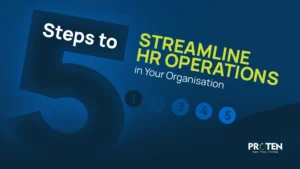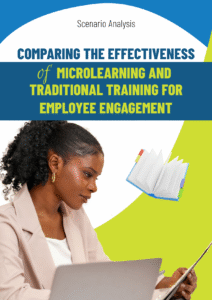Conflict. A clash between people. A serious disagreement. The prelude to war! Okay, we might be going over the top with the war part, but you can’t deny that conflict is inevitable in human interaction.
Whether it’s with a coworker, a loved one, or a friend, conflict is a universal experience. And we’ve all had it at multiple points in our lives. The heated exchange. The cold silence. The brewing resentment. Often, we find ourselves caught in a whirlwind of emotions, blaming the other person for the situation.
However, as the famous adage goes, “It’s not you, it’s me.” This perspective shift can be a powerful first step toward effective conflict resolution.
Conflict is an inevitable part of any workplace. But when managed effectively, it can spark innovation and growth. However, when left unchecked, it can erode morale, productivity, and even the bottom line.
Your role as a leader in your workplace is paramount in creating a culture where conflict is viewed as an opportunity for improvement rather than a threat.
That’s why we will explore the nature of workplace conflict, the critical role of leadership in its resolution, and effective strategies to foster harmony and productivity.
Understanding Conflict
Conflict arises from a clash of perspectives, goals, or values.
It can manifest as disagreements, misunderstandings, or outright hostility. While often perceived negatively, conflict can be a catalyst for positive change. It can lead to innovative solutions, improved decision-making, and stronger relationships.
It’s essential to differentiate between constructive and destructive conflict. Constructive conflict focuses on issues, not personalities, and promotes open communication. Destructive conflict, on the other hand, is personal, escalates tensions, and hinders collaboration. As an HR manager or CEO, you must be adept at recognizing the signs of both types of conflict to intervene appropriately.
Common causes of workplace conflict include:
I. Poor communication: Yes, you might be right, but did you air your grievance properly? Misunderstandings, unclear expectations, and lack of transparency can fuel conflict.
II. Personality clashes: Differences in work styles, communication styles, or values can lead to friction.
III. Resource scarcity: Competition for limited resources can create tension and resentment.
IV. Role ambiguity: Unclear job roles and responsibilities can result in conflict over authority and workload.
V. Organizational change: Mergers, acquisitions, or restructuring can disrupt routines and create conflict.
Your Role in Conflict Resolution
As a leader in your workplace, you set the tone for how conflict is handled within an organization. Your actions and attitudes have a profound impact on the overall conflict climate. Here are key responsibilities:
1. Create a culture of open communication: Foster an environment where your employees feel comfortable expressing their opinions and concerns without fear of reprisal.
2. Lead by example: Demonstrate effective conflict resolution skills in your own interactions with others.
3. Provide conflict resolution training: Equip employees with the tools and knowledge to manage conflict effectively.
4. Implement clear policies and procedures: Establish guidelines for handling conflict, including mediation and escalation processes.
5. Mediate or facilitate conflict resolution: Intervene when necessary to help parties reach a mutually satisfactory resolution.
6. Address systemic issues: Identify and address underlying causes of conflict, such as poor communication or inadequate resources.
Conflict Resolution Strategies
A variety of strategies can be employed to resolve workplace conflict. The most effective approach depends on the nature of the conflict and the individuals involved. Here are some key strategies:
- Active listening: Give parties an opportunity to express their perspectives without interruption.
- Empathy: Understand the feelings and viewpoints of all parties involved.
- Collaboration: Work together to find mutually beneficial solutions.
- Compromise: Find common ground and be willing to make concessions.
- Mediation: Bring in a neutral third party to facilitate communication and problem-solving.
- Negotiation: Use bargaining and persuasion to reach an agreement.
- Formal dispute resolution: Utilize grievance procedures or arbitration for serious or unresolved conflicts.
Remember, prevention is often better than cure. Proactive measures, such as team-building activities, regular performance reviews, and open communication channels, can help to reduce the likelihood of conflict.
Conclusion…
Conflict is a natural part of the workplace, but its impact can be mitigated through effective leadership and conflict-resolution strategies. By understanding the root causes of conflict, creating a supportive culture, and equipping employees with the necessary skills, you can turn conflict from a destructive force to a catalyst for growth and innovation. Always keep in mind that your ultimate goal is to create a harmonious workplace where your employees can thrive and contribute to the organization’s success.
Investing in conflict resolution can enhance employee morale, improve productivity, and build a stronger, more resilient workforce.










